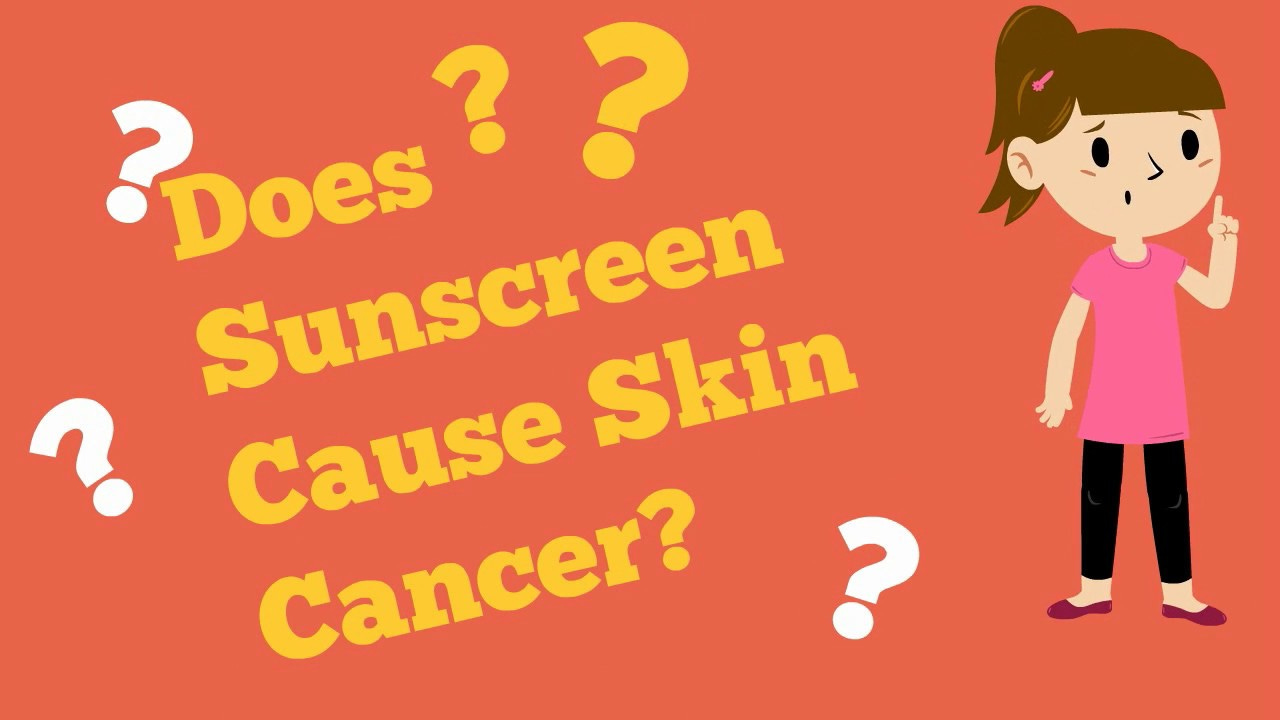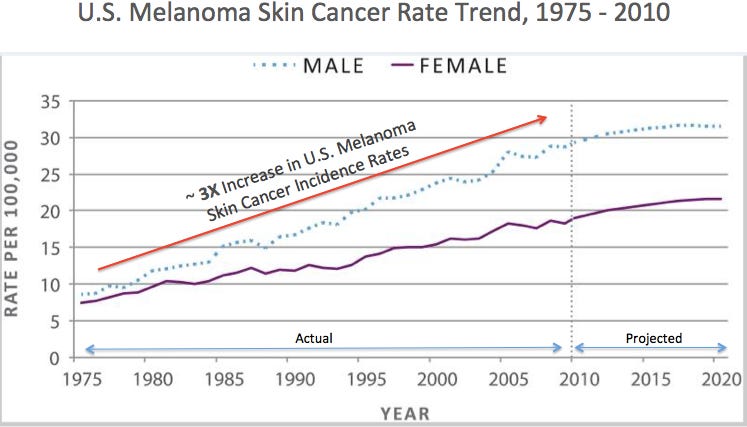The Hidden Dangers of Chemical Ingredients
Sunscreens became more widespread in the 1970s and 80s, and skin cancer rates have been steadily increasing since then. Many sunscreens contain ingredients that increase the risk of developing skin cancer. Sunscreen ingredients have been linked to hormone disruption, skin damage, and the very conditions they claim to prevent.
The Risk of Slathering On Sunscreen Chemicals
Chemical sunscreens, which absorb UV radiation and transform it into heat, often contain a cocktail of potentially harmful ingredients. These ingredients can penetrate the skin, enter the bloodstream, and cause hormonal changes that may make you more vulnerable to skin cancer over time.
Oxybenzone – The Hormone Disruptor
One of the most common sunscreen chemicals, has been detected in human urine, blood, and breast milk. It's known to disrupt estrogen, potentially affecting reproductive health. Some studies have shown that oxybenzone can alter cell function and disrupt the skin's ability to repair itself after UV exposure. This could increase the risk of mutations, contributing to skin cancer. Studies have also linked oxybenzone to coral bleaching, sparking environmental concerns about its widespread use.
Octinoxate – Thyroid Disruption and Cancer Risk
Another hormone-disrupting ingredient found in many sunscreens. Research has shown that it affects thyroid hormones, which are crucial for regulating cell growth. Thyroid dysfunction is a known risk factor for certain types of skin cancer, as it can impair the body's ability to repair damaged DNA caused by UV radiation.
Octocrylene – Free Radical Generator
When exposed to UV rays, may generate free radicals—molecules that damage cells and DNA. This process, known as oxidative stress, is a key factor in skin aging and the development of cancer. Research indicates that chronic exposure to octocrylene can increase free radical production, accelerating skin damage and potentially increasing the likelihood of skin cancer.
Homosalate – Hidden Hormonal Threat
Like oxybenzone, can accumulate in the body and disrupt hormonal balance. This chemical has been linked to estrogen and androgen imbalances, which can interfere with the skin's repair mechanisms and leave the skin more vulnerable to cancerous mutations. The more we expose ourselves to such ingredients, the more we risk long-term damage, including a higher chance of skin cancer.
Retinyl Palmitate (Vitamin A Palmitate) – Sunlight Turns Toxic
This ingredient, sometimes added for its antioxidant properties, is a potential cancer-causing agent. When exposed to sunlight, retinyl palmitate has been shown to increase the speed of tumor formation in animal studies. The FDA has even acknowledged concerns over its potential to enhance UV-induced skin cancer, although conclusive human data is still limited. However, the fact that it can act as a photosensitizer (making skin more sensitive to sunlight) adds to its risk profile.
While physical sunscreens, such as those containing zinc oxide or titanium dioxide, are often considered safer, they are not risk-free. Some studies suggest that nanoparticles of zinc oxide may penetrate the skin to some degree and potentially disrupt natural processes and increase the likelihood of DNA mutations.
Evidence
While there is ongoing debate, several studies have raised serious concerns about the chemicals used in sunscreen.
A 2017 study published in the "Journal of Investigative Dermatology" found that oxybenzone and octinoxate were detected in human blood at levels far above safety thresholds set by the FDA, indicating significant systemic absorption. The study concluded that long-term exposure to these chemicals could alter hormone function and may increase cancer risk.
Research by the University of Miami has shown that chemical sunscreen ingredients, such as oxybenzone and homosalate, can disrupt skin cell repair mechanisms after UV exposure, potentially contributing to the formation of tumors.
In a 2019 study from the Environmental Working Group (EWG), it was revealed that oxybenzone, octinoxate, and homosalate all exhibited potential to cause skin irritation and allergic reactions. The report also noted the presence of these ingredients in high concentrations in the bloodstream, leading to concerns over chronic exposure and long-term health risks.
One 2018 review concluded that chemicals like octinoxate and oxybenzone alter thyroid and estrogen activity, which may compromise the skin’s natural defenses, increasing the risk of skin cancer.
Sunscreen is supposed to protect against UV-induced skin cancer, but by using chemical ingredients that disrupt hormones and potentially damage the skin’s ability to repair itself, we may be opening the door to even greater risks. It's crucial to be aware of these risks and choose safer alternatives like mineral-based sunscreens (zinc oxide, titanium dioxide) that reflect UV rays and do not disrupt hormonal systems.
Chemical sunscreens, especially those containing oxybenzone, octinoxate, and homosalate, can interfere with the body’s hormonal balance and increase the risk of skin damage and skin cancer. The growing body of research suggests that the long-term effects of chemical sunscreens may not be as benign as we’ve been led to believe.
Disclaimer: I am not a medical professional. Consult a qualified healthcare provider for medical advice.







UV light in moderation is beneficial to the body and also the eyes. Sunscreen and wearing sunglasses blocks the UV light. Tanning beds have also disappeared as they also have the same benefits to help heal the body.